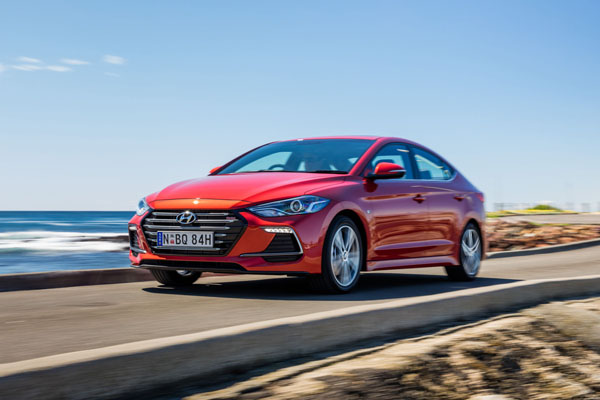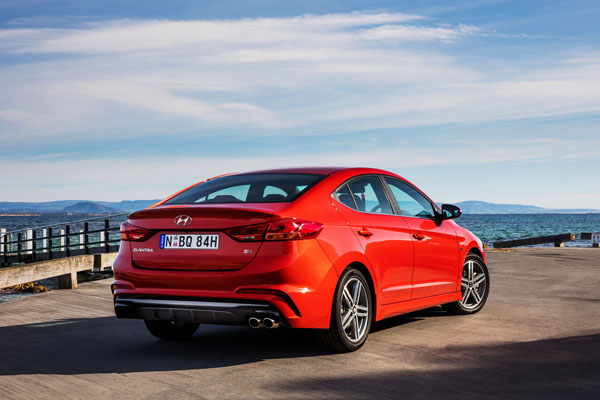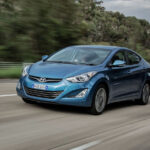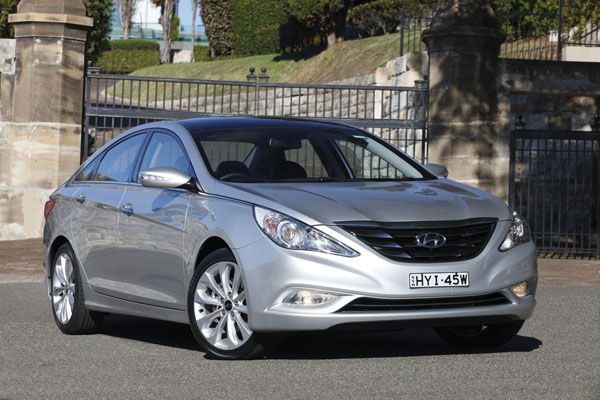 Last week we attended the launch of the Hyundai SR sedan, a model termed as a ‘warm-hatch’ rather than a ‘hot-hatch’ by Hyundai. While we published technical details in our article immediately afterwards, Hyundai put an embargo on drive impressions until today.
Last week we attended the launch of the Hyundai SR sedan, a model termed as a ‘warm-hatch’ rather than a ‘hot-hatch’ by Hyundai. While we published technical details in our article immediately afterwards, Hyundai put an embargo on drive impressions until today.
Before getting into that here are some of the leading specifications: The 1.6-litre engine in the Elantra SR Turbo produces 150 kW of power, and 265 Nm of torque across a wide spread from just from 1500 rpm to 4500 revs. It has direct fuel injection, continuously variable timing on both camshafts, a roller timing chain and special developed anti-friction coatings.
Transmission to the front wheels is either through a six-speed manual or seven-speed dual-clutch automatic. The latter has paddle-shifters mounted on the flat-bottomed multifunction steering wheel. The auto has Hyundai’s Drive Mode Select system with Normal, Eco and Sport modes. This is not available in cars with a manual gearbox.
The platform under the Elantra SR Turbo has a multi-link independent rear suspension. A simpler torsion bar layout is used on the other models in the range.
This platform was designed and developed in Europe and tested at the Nurburgring Nordschleife and at Hyundai’s Namyang R&D centre in South Korea.
Most importantly of all, the hot(ish) Elantra SR features Australian tuned suspension and steering. Local work involved many thousands of kilometres on public roads, as well as closed-circuit high-speed handling tests.
We carried out over 400 kilometres of driving in the Elantra SR Turbo using the excellent range of roads in the Albury region that straddles the border of NSW and Victoria. Bad weather saw us on flood damaged roads, some with long sweeping bends, others with seemingly endless tight twisting bits and all manner of surfaces certainly let us test the sporty Hyundai sedan to the full.
The form-fitting bucket sports seats have relatively high side bolsters that helped minimise body movement. The driver’s seat is 10-way electrically adjustable to suit a multitude of human shapes. The trim is harder than we like but that’s probably because this car is built down to a price, relatively speaking, and the sort of materials found in more expensive European cars isn’t fitted.
Steering is precise and the electric powered input has been nicely tuned to suit keen Aussie drivers’ tastes. Feedback is good and at no time did we find sharp changes of direction took us by surprise. Grip levels are high and warning flashes from the stability control systems were fewer than expected given way we were pushing the Hyundais.
Sophisticated electronic stability control kept things under control when changes of road direction over blind crests that sometimes took us by surprise.
Ride comfort is generally good but there were a few times when we were bumped around. Tyre noise is generally subdued, but some coarse-chip surfaces did increase sound levels, not unusual, and we’ve heard worse.
All-in-all we were impressed by the suspension, steering and brake dynamics of this Hyundai Elantra SR Turbo warm-hatch and suggest anyone with a little over $30,000 to spend should put it on their short list.













